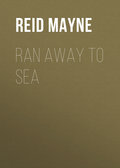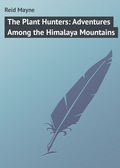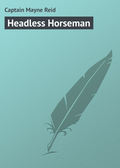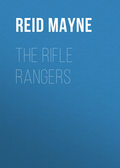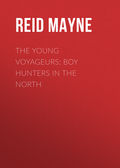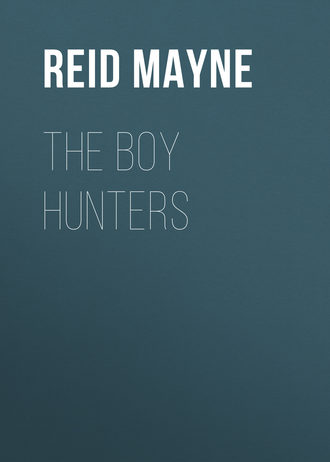
Майн Рид
The Boy Hunters
By one or the other dying of hunger. But which would starve first? It was well-known that the kite could live for days without food. Ha! but so too could the snake, – nay, more, for every day the bird could go without eating, the reptile could fast ten; besides, the snake had just dined – dined sumptuously upon the scorpion-lizard, that was now lying undigested in his stomach; whereas the kite had not tasted dinner, – nay, it was very certain he had not breakfasted either – and must have been very hungry indeed to have attempted preying upon a blood-snake full four feet long – for, as is well-known, his usual prey is the locust, the chameleon, and the little green snake (Coluber aestivus). Under every view of the question then, the snake had the advantage of the bird, and would easily outstarve him. Thus, then, the affair would end, if the combatants were left to themselves.
The young hunters arrived at this conclusion; and, having watched the contest until their curiosity was satisfied, were about stepping forward to put an end to it, when a new manoeuvre on the part of the combatants caused them to remain still. The kite had got his beak close to the head of the serpent, and was striking with open mandibles, endeavouring to seize the jaw of the latter. He was upon his back – for these birds fight best in that position. The serpent, on the other hand, was trying his best to bite the bird; and for this purpose at intervals extended its jaws, showing the double rows of sharp conical teeth. At one of these intervals, while its mouth was open, the kite struck quickly upward, and seized the lower jaw of the reptile in his beak. The latter closed its mouth on the instant; but the horny mandible was impervious to its sharp teeth, and the bird regarded them not.
The kite continued to hold fast with his powerful beak. He had now gained the advantage, for which he had been all the while contending. He had got a “fulcrum for his lever,” and he was not slow in using it. Suddenly turning back upward, with the aid of his wing and one of his claws, he held himself fast to the ground, while with his strong neck he drew the head of the serpent close under him until it lay within reach of his other claw. Then with a quick fierce stroke he planted his talons, so as to encircle the throat of his adversary, clutching and holding it like a vice.
This manoeuvre put a period to the contest. The red coils were seen to loosen, then fall off; and, although the reptile still writhed, it was only in its death-struggles. In a few moments its body lay along the grass, powerless and without motion.
The kite after a short rest drew his beak from the jaws of the serpent, raised his head, extended his wings – to assure himself they were free – and, with a scream of triumph, rose upward, the long carcass of the reptile trailing after him like a train!
At this moment another scream reached the ears of the young hunters. It might have passed for the echo of the first, but its tones were wilder and louder. All eyes were turned to the direction whence it came. The boys knew very well what sort of a creature had uttered it, for they had heard such notes before. They knew it was the white-headed eagle.
They caught sight of him the moment they turned. It was not difficult to see him soaring upward – his great tail and broad wings expanded, seven feet in extent, against the light blue sky.
When first seen his flight was nearly in a straight line, slanting up in the direction of the kite – for that was the object that had started him. He was evidently bent upon robbing the latter of his late-gotten booty.
The kite had heard the cry that echoed his own; and, knowing its import, at once plied all the power of his wings to rise higher into the air. He seemed resolved to hold on to his hard-earned plunder; or, at all events, not to yield it, without giving the more powerful robber the trouble of a chase. The fresh remembrance of the peril he had passed through in obtaining it, no doubt stimulated him to this resolve.
Birds of his species will sometimes outfly and escape the eagle – that is, some eagles, for these bird-kings differ in degrees of swiftness as hounds or horses. So, too, do the kites; and the one in question having, no doubt, full confidence in his wings, thought he would make trial of those of his pursuer – who, being personally unknown to him, might be some individual too fat, or too old, or too young, perhaps, to possess full powers of flight. At all events he had made up his mind to have a “fly” for it – believing that if overtaken he could easily put an end to the pursuit by surrendering the snake, as his cousin, the osprey, often has to do with his fish. Up, therefore, he went, in a spiral curve of about fifty yards in diameter.
If the kite entertained the idea that his pursuer was either a very old or young bird, or too fat a bird, or in any way a “slow” bird, he was likely to be soon undeceived. That idea was not shared by those who watched him in his flight. On the contrary, the young hunters thought they had never seen a more splendid specimen of his kind, – of full feather, snow-white head and tail-tip, and broad clean-cut wings. He was one of the largest size, too; which proved him not to be a “him,” but a female – for, strange to say, Nature seems to have reversed her order with these birds – the females being universally brighter in plumage, larger in body, swifter of wing, stronger, and even fiercer than the males. It may be inferred, that in the social life of “eagle-dom” the fair sex have their “rights,” and perhaps a little more. One thing is certain, and it seems to be a consequence of this (in compliment to the sex I say it) that nothing like polygamy is known amongst them. Woe to the eagle husband that would even dream of such a thing!
Voilà! up goes the kite, straining every pinion of his pointed wings – up the spiral curve, screwing himself towards the zenith. Upward follows the eagle, spirally as well, but in wider gyrations that embrace and seem to hold the curvatures of the other within their circumference. Both birds circle concentrically. Now their orbits cross each other – now they are wheeling in parallel curves. Still upward flies the kite – still upward goes the pursuing eagle. Closer and closer they appear to come; narrower grow their soaring circles – but that is because they are more distant and seem so. See! the kite is but a speck, and appears stationary – now he is lost to the view. See! the eagle is but a speck! She, too, disappears! No, not altogether – the little spot like the fragment of a white cloud, or a piece of snow upon the sky – that is her tail-tip. Ha! it is gone too – they are beyond the reach of our vision.
Hark! Ish–sh–ish! Did you hear that sound, like the whistling of a rocket? See! Something has fallen upon the tree-top, breaking several branches! As I live it is the kite! Dead he is, and the blood is spurting from a wound in his shoulder!
Hark, again! Whush–sh–ush! It is the eagle. See! she has the serpent in her talons!
The eagle had shot down from her elevation, though no eye could have followed her in that arrow-like descent. When within two or three hundred yards of the ground, her wings flew out, her tail was spread, and, suddenly lowered, fan-like to its fullest extent, arrested her downward course; and, with a few measured strokes, she glided slowly over the tops of the trees, and alighted on the summit of the dead magnolia.
Basil seized his rifle, with the intention of having a shot. There was not much cover on the ground that encircled the tree where the eagle had perched herself; and the young hunter knew from experience that his only chance of getting near enough was to make his approach upon horseback. He therefore drew the picket that fastened Black Hawk; and, flinging himself upon the horse’s back, rode off among the bushes. He had been gone but a few minutes when a sharp crack was heard, and the eagle was seen tumbling from her perch.
This was the last link in the chain of destruction!
Chapter Twelve.
The White-Headed Eagle
Basil returned, bringing with him the great bird. It was a female – as Lucien knew – and one of the largest, being over twelve pounds in weight, and measuring seven feet between the tips of the wings when expanded. The bird of this species rarely exceeds eight pounds in weight, and is proportionately small in other respects.
The white-headed eagle (Falco leucocephalus), or “bald eagle,” as he is generally called because his white head gives him somewhat of a bald appearance – has been adopted by the United States as the emblem of their Republic. If his disposition be considered, he would be a more fit emblem for a band of robbers – for a more absolute robber and tyrant does not exist among the feathered races. He robs the osprey of his fish, and the vulture of his carrion; in short, lords it over every creature weaker than himself. Now this is not the character of the nation he represents – far from it. It is true they have shown a desire to extend their territory, and have made conquests to this end. But what is the motive of these conquests? Is it to enslave and render tribute? No. They conquer not to enslave, but to make free! There are two motives for Anglo-American – I may say Anglo-Saxon, conquest, for true Englishmen feel these motives as much as Americans do. They wish to bring the whole world under a liberal form of government – one that will bear the scrutiny of reason – one that in time may extinguish crime, and render poverty a thing of the past – one that is not a patent usurpation and a robbery – a robbery perhaps more criminal in the eyes of God than waylaying on the highroad, or piracy on the high seas – more criminal, because more extensive in its fatal effects. Anglo-Saxons wish to destroy despotism, lest they or their descendants might again become what their ancestors once were – its victims. This, then, is one motive of their conquests, and it is nothing more than the naked instinct of self-preservation. But there is another motive – a nobler and more generous one. They have drunk from the cup of Liberty – the draught has pleased them, has given them happiness and joy; and, urged by that better part of our nature, they wish to share that sweet cup – ample for all —with all men. This is the true motive of the conquest of civilisation; and under the banner of such a cause, it is a question whether war and anarchy and confusion be not preferable to the deceptive peace and apparent prosperity of despotism, that, like the death-dealing vampire, soothes while it destroys.
I do not say that all Americans nor all Englishmen are entitled to the glory of such a holy motive for conquest. No. Too large a proportion, alas! are actuated only by the ignoble idea of selfish or national aggrandisement. The robber is often found in the same camp, and fighting under the same banner, with the soldier of Freedom. It is not strange, therefore, that the true sons of Liberty should sometimes be associated with its bastard children of the shackle and the whip.
But, I shall not weary you with any more political science. Not that I consider it of small importance to you. On the contrary, I deem that science the most important of all others that have ever occupied the attention of men. Its influence extends to almost every object around you. It shapes the carriage in which you ride, and the ship in which you sail. Its knowledge modifies the nature of your soul, and decides whether you shall be a slave or a freeman. It even extends to the form of your body, giving it the abject attitude and gloomy aspect of slavery and guilt, or the bold, upright carriage and joyous look of virtue, which God gave to the first man when He made him after His own image.
But come, boy reader! I have promised not to weary you with these things. Such teachings I must reserve for a future opportunity; when, God willing, I shall present them to intellects older than yours. Perhaps you yourselves may then be old enough to take an interest in them; and if so, you may learn some truths that for long years have been the study of your friend – the author.
Now let us return to the eagle. I am thinking what a pity it is that the Americans should have chosen this tyrant-bird as the emblem of their liberty; for, although he is most appropriate for one portion of their people, he is far from being a fit emblem of the principles of the great republic. So thought the wise Franklin. There are many other animals, peculiar to the territory of the United States, far more deserving of the distinction. There is the bold but harmless buffalo, the stately elk, and the industrious beaver; or if a bird must needs be upon the banner, where could one be found better suited to that end than the wild-turkey, possessing as he does a combination of good qualities – grace, beauty, courage, and usefulness? Thus reasoned Franklin; and it might be yet worth the while of the American people to give consideration to his reasoning, and discard the eagle; or, at all events, change the species – for peculiar to the United States territory there is another bird of the kind, far nobler, as well as larger and more beautiful.
It is curious to observe how many countries have adopted this rapacious bird for their emblem; and it forms a sad index to the motives that have hitherto actuated nations. In ancient times it was seen upon the banners of Persia and Rome. In modern days Napoleon spread its wings like black shadows over France. It is the emblem of Russian despotism and American freedom. Austria, Prussia, Poland, Sicily, Spain, Sardinia, and many of the small governments of Germany, look up to the eagle on their standards; while, upon the other side of the Atlantic, it waves over the great nations of the United States and Mexico, as well as several of the smaller republics. Why, a general war among the nations of the world would be almost exclusively a war among the eagles! It is not improbable that the lion would insist upon having a claw in the quarrel; although his honesty and nobility of disposition are very much doubted, particularly by the jackal and some other animals. He is, therefore, no better qualified to act as the representative of a pacific people than the very worst of the eagles; but he fortunately has a wise keeper, called Public Opinion, who of late has held him under some restraint.
“What a chain of destruction!” exclaimed Lucien. “One creature preying upon another.”
“Ay,” added François; “and how curious it should begin with a bird and end with a bird. Look at the two together. Ha! ha!”
As François made this remark, he pointed to the little humming-bird and the great eagle – which had been laid side by side upon the grass, and, sure enough, presented in size and appearance a most singular contrast to each other.
“You forget, François,” said Lucien, “there were two other links to the chain, and perhaps many more.”
“What other links?” demanded François.
“The humming-bird, you remember, when attacked, was himself a destroyer. He was killing the little blue-winged fly.”
“That is certainly another link, but – ”
“Who killed the eagle?”
“Ah, true! Basil, then, was the last link in the chain of destruction.”
“Perhaps the most criminal, too,” said Lucien, “because the least necessary. The other creatures were but following out their instincts to procure food, whereas Basil’s only motive was one of wanton destruction.”
“I beg to differ with you, Luce,” said Basil, interrupting his brother, sharply, “it was no such thing. I shot that eagle because he killed the kite, and robbed him of his prey, instead of using his industry and getting food for himself. That’s why I added a link to your chain.”
“In that sense,” replied Lucien, smiling at his brother – who seemed a little ruffled at being thus charged with unnecessary cruelty, – “in that sense you were, perhaps, justifiable; though it is difficult to understand why the eagle was more guilty than the kite himself. He took only one life, and so did the kite.”
“But,” rejoined Basil, “in addition to taking away the life of his victim, he robbed him. Robbery and murder both. Now the kite was guilty only of the latter.”
“Ha! ha! ha!” laughed Lucien and François together. “There is a distinction with a difference!”
“But, brother Luce,” inquired François, “what did you mean when you said there might be many more links to this chain?”
“Why, who knows but the blue-winged fly was preying upon some other creatures smaller than himself? And these again, upon others still less; who, though invisible to our eyes, possess life and organisation as well as we. Who knows to the contrary? And who knows the reason why a mysterious Providence has created those beings to be the food of each other? That is a question about which we can arrive at no satisfactory conclusion.”
“Who knows, brother,” said François, “since you are speculating – who knows but there may be an extra link at the other end of the chain? Ho, Basil! what say you? Suppose we fall in with grizzly bears.” And François laughed as he put the question.
“And supposing we do,” replied Basil, “you are as likely to form that link as anybody else.”
“Heaven forbid!” exclaimed Lucien. “I hope that in all our travels we shall see neither a grizzly bear nor an Indian.”
“And I hope for nothing of the sort,” rejoined Basil. “I long to have a crack at a grizzly; and as for Indians, I haven’t the least fear of them, so long as I carry this.”
As Basil made this remark, he drew out the little beaded case from his bosom, held it up a moment, and then returned it to its place again.
“Now, brother,” cried François, “tell as about that pouch, and how it is to save us from Indians. I am really curious to know.”
“Not now, my boy,” replied Basil, with a patronising air. “Not now. We must prepare our supper, and get to sleep. We have lost half a day drying our rags, so we must make up for it by an early start in the morning. Then for the prairies!”
“Then for the prairies!” echoed François, – “the prairies – the wild horses – the big-horns – and the buffalo!”
Chapter Thirteen.
Three Buffaloes with Wings
Our travellers next morning resumed their journey, and for several days continued on without meeting any incident worth recording. They crossed many large streams, among which may be mentioned the Neches and Trinity of Texas.
On the “divide,” between the Trinity and Brazos rivers, an adventure befell them that came near having a painful result.
In hot weather it was their custom to halt during the noon hours, both to refresh themselves and rest their animals. This is the custom of most travellers through these wild regions, and is called “nooning.”
With this intention, one day, they drew bridle by the edge of a tract of prairie, and dismounted. Behind them was the forest through which they had just passed, and before them lay the prairie, which they intended to cross in the cool of the evening. The surface of the latter was quite level, covered with a green mantle of young buffalo-grass, with here and there an island of low timber that broke the monotony of the view. In the distance a thick forest of live oak bounded the prairie on the other side; and although the latter appeared only two or three miles distant, it was not less than ten – so deceptive is the pure atmosphere of these upland regions. The country in which they now were was what is termed “timber prairie” – that is, a prairie interspersed with groves and copses.
I say our adventurers had just dismounted, and were about to take off their saddles, when an exclamation from François drew the attention of his brothers.
“Voilà!” cried he, pointing out to the open ground. “Buffaloes – buffaloes!”
Basil and Lucien looked in the direction pointed out. Three large dark objects were seen on the crest of a low swell in the prairie. They were moving about; and one was evidently smaller than the others.
“Of course they are buffaloes,” continued François. “Look at their size! Two bulls and a cow, no doubt.”
His brothers agreed with him. None of the three had ever seen buffaloes in their native wilderness; and of course had but an indistinct idea of how they might appear from a distance. Buffaloes they must be – elk or deer would look red – wolves red or white; and they could not be bears, as these last would not likely be out on the prairie in threes, unless, indeed, they might be grizzly bears – who do sometimes go out into the open ground to dig for the “pomme-blanche” and other roots. This, however, was not probable, as the grizzly bears are seldom or never found so far to the eastward. No. They were not “grizzlys.” They were not wild horses neither, that was plain enough. Buffaloes, then, they must be.
Like all who see buffaloes for the first time in their native pastures, our young hunters were filled with excitement – the more so, since to meet with these animals was the object of their expedition, of the long and perilous journey they had undertaken.
A hurried consultation followed as to how they should capture these three. It was true that none of them was a white buffalo; but no matter. Our hunters wanted to taste buffalo-beef; and the chase after these would give them practice, which might serve them afterwards. How, then, were they to set about it?
“Why, run them, of course,” counselled the ready François, with the air of an experienced buffalo-hunter.
Now, there are several methods of hunting buffaloes, practised upon the prairies, both by whites and Indians. The most common is that of which François spoke, “running.” This is done by simply overtaking the buffalo, galloping alongside of him – the hunter, of course, being on horseback – and shooting him through the heart while he runs. Shoot him in the region of the heart you must; for you may put twenty bullets into his great body elsewhere, and he will still manage to get away from you. The hunters aim a little above the brisket, and behind the fore-shoulder. The white hunters use the rifle, or sometimes a large pistol – which is better for the purpose, as they can load it more easily while going in a gallop. The Indians prefer the bow – as they can shoot arrow after arrow in quick succession, thus slaying many buffaloes in a single “run.” So expert are they with this weapon, that their arrows have been known to pierce through the bodies of large buffaloes, and pass clear out on the other side! At times the Indians use spears with which they thrust the buffaloes, while galloping alongside of them.
Another method of hunting these animals, is termed “approaching.”
“Approaching” buffaloes is nothing else than creeping stealthily on them until within range, when the hunter fires, often loads again and fires, and so on, until many of them are killed, before their companions take the alarm and scamper off. Indeed, the hunter will sometimes crawl up to a herd; and concealing himself behind the bodies of those he has already killed, fire away until many have fallen. In doing this he takes care to keep to leeward; for if otherwise, and these animals – who have much keener scent than sight – should happen to “wind” him, as it is termed, they are off in a moment. So keen is their scent, that they can detect an enemy to windward at the distance of a mile or more. In “approaching,” the hunter sometimes disguises himself in the skin of a wolf or deer; when the buffaloes, mistaking him for one of these animals, permit him to get within shooting distance. An Indian has been known to creep up in this manner into the midst of a buffalo herd, and with his bow and arrows, silently shoot one after another, until the whole herd lay prostrate! “Approaching” is sometimes a better method than “running.” The hunter thus saves his horse – often a jaded one – and is likely to kill a greater number of buffaloes, and get so many more hides, if that be his object, as it sometimes is. When he is a traveller only, or a beaver-trapper, who wants to get a buffalo for his dinner, and cares for no more than one, then “running” is the more certain mode of obtaining it. In this way, however, he can kill only one, or at most two or three; for, while he is shooting these, and loading between times, the herd scatters, and runs out of his reach; and his horse is apt to be too much “blown” to allow him to overtake them again.
A third method of hunting buffaloes is the “surround.” This is practised only by the Indians – as the white hunters of the prairies are rarely ever in such numbers as would enable them to effect a “surround.” The name almost explains the nature of this hunt, which is practised as follows: – When a hand of Indian hunters discover a herd of buffaloes, they scatter and deploy into a circle around them. They soon accomplish this on their swift horses, for they are mounted – as all prairie-hunters are sure to be, whether whites or Indians. As soon as the circle is formed, the Indians ride inward with loud yells, and drive the buffaloes into a thick clump in the centre. They then dash upon them with bows and lances – each hunter killing as many as he can. The buffaloes become confused, run to and fro, and but few of them in the end get off. A herd of hundreds, and even thousands, is sometimes slaughtered at one of these battues. The Indians make this wholesale destruction for two objects; first, to get the meat, which they preserve by “jerking” – that is, by cutting into thin strips and drying in the sun – and, secondly, for the skins with which they cover their tents, make their beds, and part of their clothing. Many of them they barter at the trading-houses of the whites – established in remote regions for this purpose – where they receive in exchange knives, rifles, lead, powder, beads, and vermilion.
Another method the Indians have of hunting the buffalo, is not unlike the last, but is still more fearful to witness.
Most of the region where the buffaloes range consists of high upland prairies, such as in Asia are called “steppes,” and in Mexico and South America “mesas,” or “table-lands.” Such plains are elevated from three to six thousand feet above the level of the sea. In many places on these table-lands there are deep rifts called “cañons,” or more properly “barrancas,” that have probably been formed by running water during rain-storms. These are often dry, and look like vast fissures opening down into the earth – often for a thousand feet or more – and extending away for scores of miles across the prairie. Sometimes two of them intersect each other, forming a triangular space or peninsula between; and the traveller on reaching this point is obliged to turn back, as he finds himself almost encircled by precipices yawning downward into the earth. Whenever the Indians get a herd of buffaloes near one of these cañons, they surround them on three sides, and guide them towards the precipice; and when they are near enough, gallop forward with wild shouts, causing the buffaloes to dash madly and blindly over. A whole herd will sometimes leap a precipice in this way – those in the front being forced over by the others, and, these in turn pressed, either to take the leap or be thrust by the spears of the pursuing horsemen. Sometimes when the Indians are not insufficient numbers to make a “surround” of buffalo, they collect buffalo chips, and build them in little piles so as to represent men. These piles are placed in two rows, gradually converging towards each other, and leading to one of the aforementioned bluffs. Between these two rows they drive the buffaloes, that, mistaking the piles of their own “chips” for Indians, are guided onwards to the edge of the precipice, when the hunters make their noisy rush, and force them over.
There are other methods of buffalo-hunting, such as pursuing them in the snow, when the hunters in their snow-shoes easily overtake and slaughter them. Some Mexican buffalo-hunters (in the southern prairies called “ciboleros”) capture the buffalo with the lasso; but this method is not often practised, except when they wish to catch the young calves alive for the purpose of raising them.
Now, all these methods were familiar to our three young hunters – that is, familiar from descriptions – as they had often heard about them from old trappers who came down among the settlements of Louisiana, and who sometimes spent the night under their father’s roof – for the Colonel liked very much to entertain these old trappers, and get a talk out of them. It was from this source then, that François derived his ideas of buffalo-hunting, which led him in the pride of his knowledge to exclaim, “Run them, of course.”
Basil and Lucien took a little time to consider it, all the while keeping their eyes fixed upon the three buffaloes. There was just one a-piece, which they could separate, and run down – they were far from any cover, and it might therefore be difficult to “approach” them – moreover the horses were fresh, for the day before had been Sunday, and our adventurers had always made it a rule to lie by on that day, to rest both themselves and their animals. This they did in accordance with a command given to them by their father at starting. All things considered, then, “running” was the best plan, and it was the one they resolved to adopt.
Jeanette was tied to a tree, and left behind with her packs, that had not yet been taken off. Marengo, of course, was taken along with them, as he might prove useful in pulling down one of the old bulls if wounded. Everything that might encumber the hunters was left with Jeanette; and all three rode out upon the prairie, and made direct for the animals. It was agreed that each should choose one of them, and then do his best with gun and pistols. François had put buck-shot into both barrels, and was full of confidence that he was about to “throw” his first buffalo.
As they drew nearer, a lustrous appearance upon the bodies of the strange animals attracted their attention. Were they buffaloes, after all?



